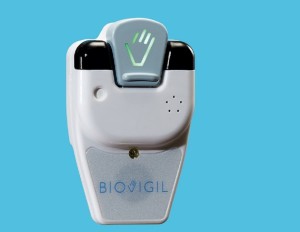This is a CBS News video of the Arrowsight handwashing video monitoring system that has been used to dramatically increase handwashing compliance rates at North Shore University Hospital in Manhasset, N.Y.
The same system is now being widely used by meat companies in an effort to reduce E. coli and other contamination inside processing plants.
According to a Wall Street Journal article earlier this month, the new technique allows remote auditors to watch whether plant workers follow safety protocols aimed at reducing the spread of deadly bacteria.
JBS SA, the world’s largest beef processor, saw a 60% drop in the level of E. coli found by company inspectors after it installed monitoring cameras, said John Ruby, head of technical services for the company’s beef division. The Brazilian meat processor started with a pilot program after it recalled 380,000 pounds of beef that sickened 23 people in nine states in 2009.
A trial run at its Souderton, Pa., plant showed an immediate improvement in results, so the company placed cameras in all eight of its U.S. plants.
"We are seeing increased interest among meat companies in remote video auditing as part of their food safety and animal welfare programs," said J. Patrick Boyle, president of the American Meat Institute, which represents most beef and pork packing companies. "Those who have implemented these programs have reported very good results."
Cargill Inc., another major U.S. beef producer, uses video cameras to make sure its cattle are treated humanely before they are slaughtered. The Minneapolis-based company is now considering an expansion to monitor for food safety in its pork and turkey operations, according to Mike Siemens, head of the company’s animal welfare division.
Aurora, Ill.-based OSI Group LLC., a meat processor, for several years has used video cameras to monitor employees in three of its five U.S. plants for general food-safety practices. The company, which supplies McDonald’s and other companies with bacon, sausage and chicken, decided in June to expand the monitoring to its other two plants.
After the JBS results, the Agriculture Department—the government agency responsible for overseeing the safety of the U.S. meat supply—in August released voluntary guidelines for video monitoring at meat companies.
In some cases, companies are watching to see if sloppy work is allowing meat contamination. They are also using the cameras to make sure employees aren’t mistakenly sending the expensive cuts into hamburger grinders.
Arrowsight has two facilities—one in Huntsville, Ala., and one in Visakhapatnam, India—employing 50 people to monitor meat-cutting operations. The company was wary about using workers in India, where parts of the country outlaw cattle slaughter, to monitor beef production.
But it hasn’t had problems with that, Mr. Aronson said. Arrowsight routes the most graphic slaughter video to its staff in Huntsville, he said.
 According to The Atlantic, a number of companies have designed systems that aim to nudge doctors and nurses into washing their hands regularly. One of these devices, a badge made by Biovigil, aims to exploit a very powerful emotion: shame.
According to The Atlantic, a number of companies have designed systems that aim to nudge doctors and nurses into washing their hands regularly. One of these devices, a badge made by Biovigil, aims to exploit a very powerful emotion: shame.
 percent. But a video monitoring system that provides instant feedback on success has raised rates of handwashing or use of alcohol rubs to over 80 percent, and kept them there.
percent. But a video monitoring system that provides instant feedback on success has raised rates of handwashing or use of alcohol rubs to over 80 percent, and kept them there.(4).jpg) beef processing plants in America use its video system to monitor workers’ hygienic practices.
beef processing plants in America use its video system to monitor workers’ hygienic practices.